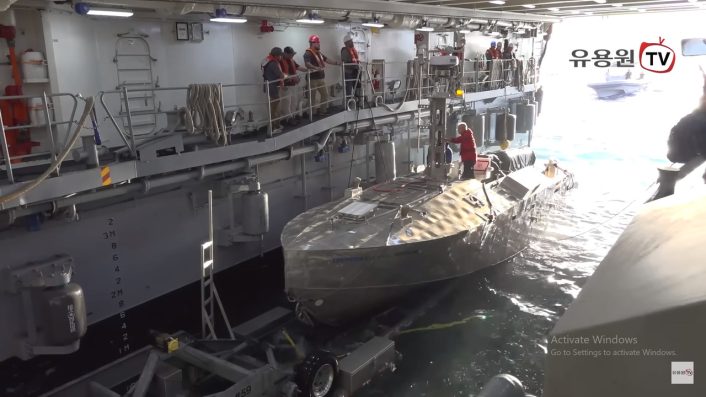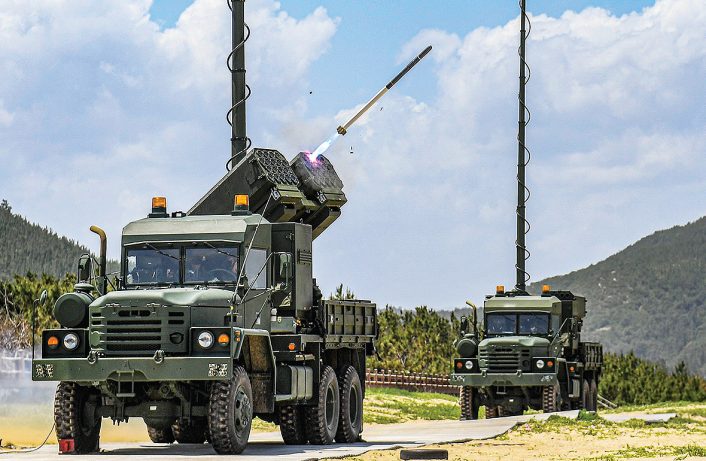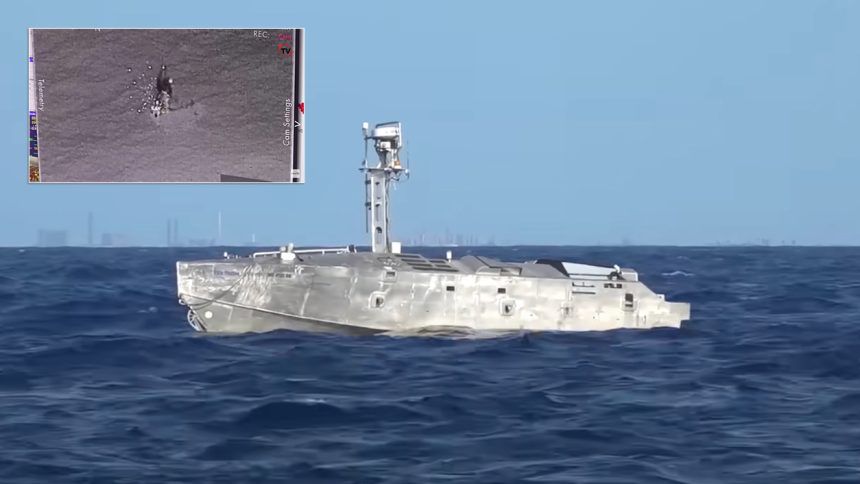The Poniard rocket successfully passed the performance tests of the U.S. Navy and might become the first South Korean weapon system to be exported to the United States.
The U.S. DoD (Department of Defense) and South Korean defense major LIG Nex1 successfully tested on Jul. 15, 2024, under the FCT (Foreign Comparative Testing), the Poniard 2.75-inch guided rocket. During the test, part of the ongoing RIMPAC 2024 exercise, six rockets were fired from Textron’s CUSV (Common Unmanned Surface Vehicle), all of which hit the target.
The Poniard, also called the K-LOGIR (Korean-Low cOst Guided Imaging Rocket), has been tested on prior occasions as a part of the FCT, which has the goal to verify the technological capabilities of foreign defense companies’ weapon systems for potential adoption by the U.S. military. According to reports, the first phase of the FCT commenced in 2019, focused on verifying Poniard’s performance. LIG Nex1 also showcased the K-LOGIR/Poniard during RIMPAC 2022.
The latest live-fire exercise during the current iteration of the RIMPAC 2024 appears to be based on more sophisticated and realistic scenarios formulated by the ROK (Republic of Korea) Navy and the USN (U.S. Navy), comprising unmanned target detection, identification, tracking, engagement and damage assessment, also using other naval and aerial platforms.
Yu Yongwon TV posted a two-minute video, mentioning that “all sea targets were sunk with successive shots, and even the wreckage of the target was completely destroyed with one last shot.” The video further described Poniard/K-LOGIR as a 2.75-inch guided rocket installed on the CUSV, which itself was transported on the ROKS Cheon Ja Bong, a 4,900ton LST-II (Landing Ship Tank-II) Cheon Wang Bong-class tank landing ship of the ROK Navy.
The test
The video, originally released by the ROK Navy, shows the Textron CUSV floatable well deck of the Cheon Ja Bong, with an extendable rectangular box turret on its stern, shown swiveling and folding back during testing before the live fire. The Poniard missile is presumably loaded into the launcher at this point, because the next part shows the CUSV exiting the well deck and sailing into the ocean.
Another video segment shows the CUSV, with a cover on the turret, being assisted by personnel on a RHIB (Rigid Hull Inflatable Boat) while leaving the well deck in rough sea conditions. It’s unknown if this segment was part of the live fire or a separate event.
An overhead thermal footage then shows two rockets hitting a small target in quick succession. LIG Nex1 later mentioned that this was the first instance where South Korea and the United States applied unmanned concepts, such as communication between unmanned systems and unmanned target detection, throughout the entire process.

Tactical utility
LIG Nex1 describes the Poniard as a “guided weapon that accurately strikes multiple LCACs (Landing Craft Air Cushion) of an enemy landing on the coast at high-speed.” The weapon is capable of “simultaneous tracking of and response to several targets by loading multiple guided rockets.”
The combination of USVs and guided rockets could be used, for an instance, to strike North Korean amphibious vessels trying to transport troops and materials on island features of the South. In addition to the CUSV, Poniard is expected to equip the indigenous Sea Sword-3 USV.
The Poniard, adopted by the ROK Marine Corps in 2016, has an IIR (Imaging Infrared) seeker with fire-and-forget capability that can engage targets in day and night conditions. The weapon has been found to be more cost-effective than the costlier Hellfire air-to-ground missiles for lightly armed targets.
Poniard’s broad equivalent in the U.S. military is the APKWS (Advanced Precision Kill Weapons System), a semi-active laser guidance kit which turns 2.75 inch Hydra rockets into guided munitions. The weapon can also be employed in a Counter-UAS role as part of the Vehicle-Agnostic Modular Palletized ISR Rocket Equipment (VAMPIRE), which Ukraine has successfully used against Russian drones.
Production and possible adoption by the US
This test marks the completion of the performance test by the U.S., with POniard becoming Korea’s first guided rocket system to achieve the milestone. Admiral Lisa Franchetti, U.S. Chief of Naval Operations, stated that the test results would also be used as reference material for testing and developing the attack capabilities of Fast Inshore Attack Craft (FIAC).
LIG Nex1 is now looking to possibly secure a production contract with the US after the successful test. That move is however still far off, as it would involve budget inclusion, approving it as a Program of Record, funding allocation, followed by the two deciding whether it would be a direct import or licensed production in the U.S. by its defense companies.
It would also mark the first instance of a weapon system developed by South Korea being exported to the US. Service within both the ROK military and the US defense forces would also enhance the Poniard’s export prospects to other countries.

The weapon and the concept of its application is consistent with the emerging USV (Unmanned Surface Vessel), drone and attritable platforms being envisaged by the USN for a war with China over Taiwan. The Aviationist had covered these topics in earlier reports here and here. The USN itself is validating USVs in various efforts for different roles, ranging from surveillance, reconnaissance, detached weapons carriers, logistics and missile release platforms.









